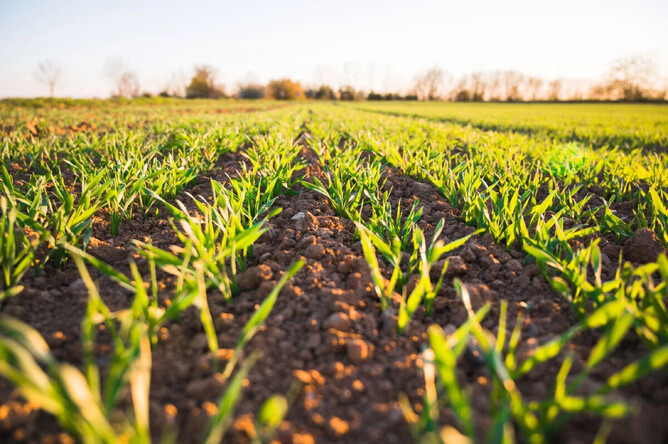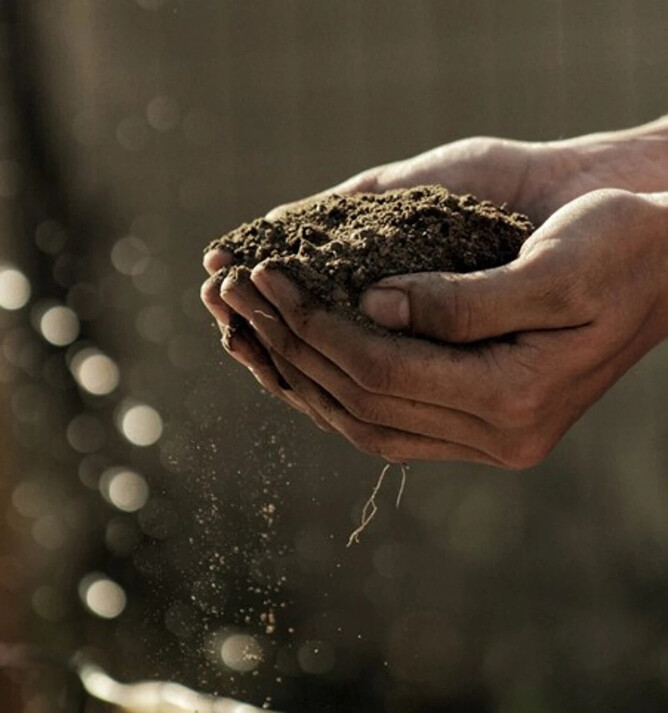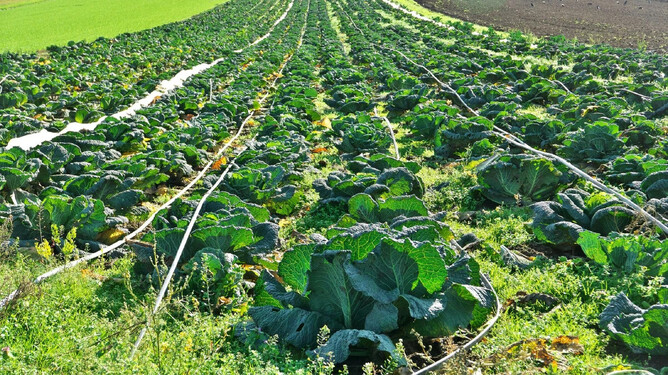Growing lavender is great and growing lavender using regenerative farming principles is even better. At Lavender Row we are exploring how we can farm in a way that regenerates our soil, creating benefits for the environment as well as our business. The beauty of regenerative agriculture is that it is for everyone – whether you have a large commercial operation or a backyard. We’re just at the start of our journey so join us as we learn more about it.
What is regenerative agriculture?
Regenerative agriculture is a conservation and rehabilitation approach to growing food and farming. It sees your farm (or your backyard) as a whole system rather than just the sum of its parts. Looking at your system as a whole means that there is no “one size fits all” and what works for you will depend on your context – what is the condition of your soil, what level of nutrients are in that soil and what ability your plants have to take and use those nutrients, what are you trying to grow, what are your climatic conditions, etc. But generally what you are trying to focus on is regenerating soil condition, increasing biodiversity,[1] improving water retention and cleanliness,supporting soil carbon sequestration, increasing resilience to climate change, and strengthening the health and vitality of the soil and thereby yields.
While regenerative agriculture is not one specific practice, but a variety of sustainable agriculture techniques, it is underpinned by 5 principles coined by Gabe Brown, a North Dakota farmer who has become legend in regen ag circles:
- Minimal tillage
- Protect the soil
- Improve soil biodiversity
- Keep living roots in the soil
- Integrate livestock
Our lives depend on soil. This knowledge is so ingrained in me now that it’s hard for me to believe how many soil-destroying practices I followed when I first started farming. I didn’t know any better. In college I was taught all about the current industrial production model, which is a model based on reductionist science, not on how natural ecosystems function.
The story of my farm is how I took a severely degraded, low-profit operation that had been managed using the industrial production model and regenerated it into a healthy, profitable one. The journey included many trials and constant experimentation, along with many failures and some successes. I’ve had many teachers, including other farmers and ranchers, researchers, ecologists, and my family. But the best teacher of all is nature herself.
In the everyday work of my farm, most of the decisions I make, in one way or another, are driven by the goal of continuing to grow and protect soil. I follow five principles that were developed by nature, over eons of time. They are the same any place in the world where the sun shines and plants grow. Gardeners, farmers, and ranchers around the world are using these principles to grow nutrient-rich, deep topsoil with healthy watersheds.
The five principles of soil health are:
- Limited disturbance. Limit mechanical, chemical, and physical disturbance of soil. Tillage destroys soil structure. It is constantly tearing apart the “house” that nature builds to protect the living organisms in the soil that create natural soil fertility. Soil structure includes aggregates and pore spaces (openings that allow water to infiltrate the soil). The result of tillage is soil erosion, the wasting of a precious natural resource. Synthetic fertilizers, herbicides, pesticides, and fungicides all have negative impacts on life in the soil as well.
- Armor. Keep soil covered at all times. This is a critical step toward rebuilding soil health. Bare soil is an anomaly—nature always works to cover soil. Providing a natural “coat of armor” protects soil from wind and water erosion while providing food and habitat for macro- and microorganisms. It will also prevent moisture evaporation and germination of weed seeds.
- Diversity. Strive for diversity of both plant and animal species. Where in nature does one find monocultures? Only where humans have put them! When I look out over a stretch of native prairie, one of the first things I notice is the incredible diversity. Grasses, forbs, legumes, and shrubs all live and thrive in harmony with each other. Think of what each of these species has to offer. Some have shallow roots, some deep, some fibrous, some tap. Some are high-carbon, some are low-carbon, some are legumes. Each of them plays a role in maintaining soil health. Diversity enhances ecosystem function.
- Living roots. Maintain a living root in soil as long as possible throughout the year. Take a walk in the spring and you will see green plants poking their way through the last of the snow. Follow the same path in late fall or early winter and you will still see green, growing plants, which is a sign of living roots. Those living roots are feeding soil biology by providing its basic food source: carbon. This biology, in turn, fuels the nutrient cycle that feeds plants. Where I live in central North Dakota, we typically get our last spring frost around mid-May and our first fall frost around mid-September. I used to think those 120 days were my whole growing season. How wrong I was. We now plant fall-seeded biennials that continue growing into early winter and break dormancy earlier in the spring, thus feeding soil organisms at a time when the cropland used to lie idle.
- Integrated animals. Nature does not function without animals. It is that simple. Integrating livestock onto an operation provides many benefits. The major benefit is that the grazing of plants stimulates the plants to pump more carbon into the soil. This drives nutrient cycling by feeding biology. Of course, it also has a major, positive impact on climate change by cycling more carbon out of the atmosphere and putting it into the soil. And if you want a healthy, functioning ecosystem on your farm or ranch, you must provide a home and habitat for not only farm animals but also pollinators, predator insects, earthworms, and all of the microbiology that drive ecosystem function.




